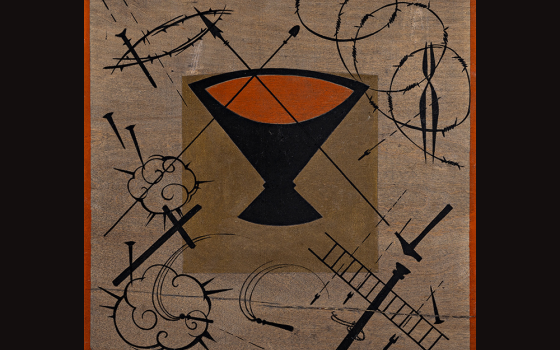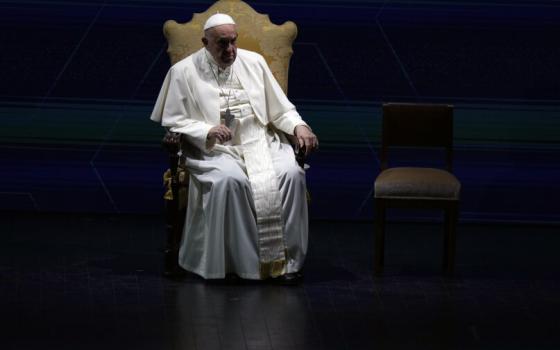Today if the Feast of St. Charles Borromeo. It is also the anniversary of the coronation of Saint Pope John XXIII. John had been elected on October 28, 1958, and given the elaborate ceremonies involved in a papal coronation, ceremonies that John loved, the preparations took about a week. Still, he chose this feast for a reason and delivered the first clue that his would be a reforming papacy: Borromeo was one of the great reformers of the sixteenth century and Roncalli knew all about him, having edited the Acta of his episcopal visits after the Council of Trent.
Borromeo became the cardinal-nephew when his uncle was elected pope as Pius IV on Christmas day 1559. His predecessor, Paul IV, had been one of the leading reformers earlier in the century, but he grew suspicious of Pole, Contarini and others who were more anxious to come to peaceful terms with the growing Protestant movement and more deeply imbued with the spirit of humanism. Upon his election, Paul made sure the Council of Trent would fade into the mists of history. When Pius succeeded him, he determined to re-convoke the Council and bring it to completion, and so he did. His nephew, Borromeo, was critical in bringing the Council to a successful conclusion.
That conclusion was not easy and one of the last stumbling blocks were the issues related to marriage. During the recent synod, some wild claims were made about whether or not the Church can change doctrine, or only practice, and if a change in practice might indicate a real, if unmentioned, change of doctrine. At Trent, to be clear, the practice changed and so did the doctrine. During the late Middle Ages, through the various Lateran Councils, the Church had more explicitly taught that marriage was a sacrament and the practice of weddings taking place in churches slowly took hold. But, only at Trent was it decreed that a marriage between two baptized Catholics that did not take place before a priest with two witnesses was an invalid marriage. That is a pretty big change from the earlier practice. Testimony in stone of the earlier practice can still be seen in the architecture of some gothic churches: a couple walked by the church on their way back from the registry and the priest came out on a little balcony and blessed them as they went to the party. After Trent, that couple had to go inside the Church and the priest had to perform the rite. As in all the reforms at Trent, it took some time for them to be implemented throughout the Catholic world: Back then, civil authorities reserved the right to publish ecclesial decrees in their realms – or not! But, in the Archdiocese of Milan, where Borromeo went as archbishop after his uncle died, these and all the other reforms of Trent were implemented with greater thoroughness than almost any other Italian diocese.
One has difficulty imagining a young Fr. Angelo Roncalli, poring over the old accounts of Borromeo’s pastoral visits. By the time he became pope, he was an older, overweight, jolly man, who evidenced the wisdom of his peasant stock and a keen pastoral touch more than his scholarly inclinations. But, he knew Church history and, I believe, just so he was never terrified by the prospect of change because he had encountered the long history of change in his researches. Certainly, he concluded that by reforming the Catholic Church in the sixteenth century, Borromeo and others had saved it, that those who resisted any change had set the course on a road to disaster. John’s decision to be crowned on the Feast of the great reformer of the sixteenth century was a tip of what was to come.
The calling of the Second Vatican Council was John’s signature gift to the Church. It is doubtful he fully realized the forces of change he had tapped into: He thought one session of the Council might be enough to complete its work! But, he gave us another tip about his willingness to embrace change shortly before the Council opened when he decreed, on his own authority, that the name of St. Joseph be added to the Roman canon. Before Vatican II, of course, there was only one Eucharistic prayer, the Roman canon which had come out of Trent. It was and is a beautiful prayer. Those who saw no need for a Council and who resisted efforts at reform were put into a quandary by John’s seemingly small addition. On the one hand, they had been saying nothing could change, certainly not the most important prayer in the most important rite of the Church. But, who could argue with including the much beloved St. Joseph? Pope John did not only say that change was possible, he actually made a change. It was a small decision, to be sure, but it shattered the idea that nothing could change, and did so on the issue with which the Council would begin, the liturgy.
St. Pope John XXIII died between the first and second sessions of the Council. We do not now how he would have reacted to all the reforms that came from it. He was a deeply conservative man in many ways, but he was never afraid of change and he did not wrap himself in syllogisms and canons. The Council he unleashed not only changed many practices and disciplines in the life of the Church, it also changed doctrine, most obviously in the case of religious liberty. In the early 1950s, Fr. John Courtney Murray was silenced by the Vatican for his writings on the issue. A decade later, his views were enshrined in Dignitatis Humanae.
We can debate until the cows come home about how change happens in the Church, whether a change in practice precedes, or should precede, a change in doctrinal understanding. We can argue that religious liberty is a qualitatively different kind of issue from the issues related to marriage that were the focus of the synod. But, the idea that nothing can change is just kooky and today is a good day to remember that fact.




